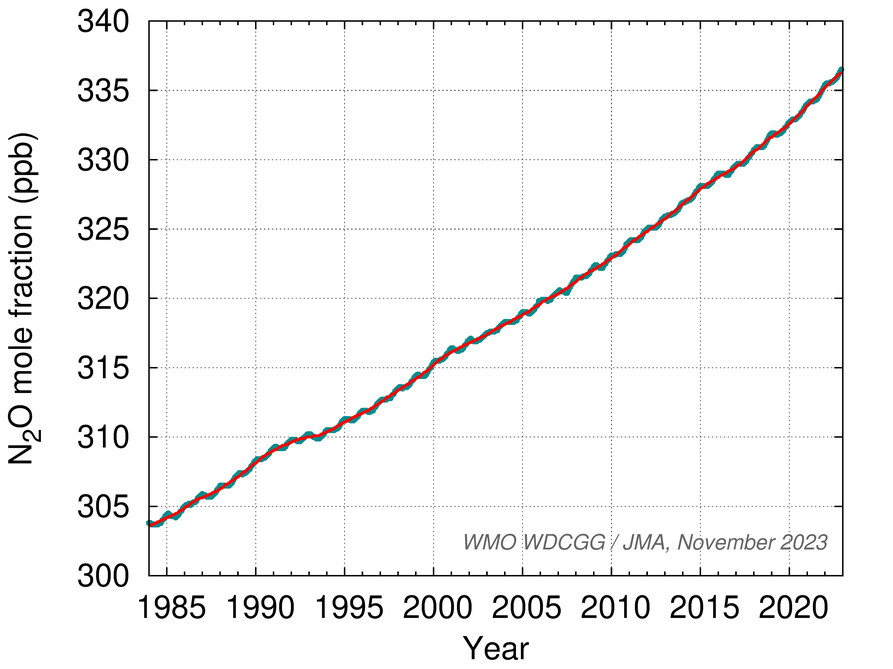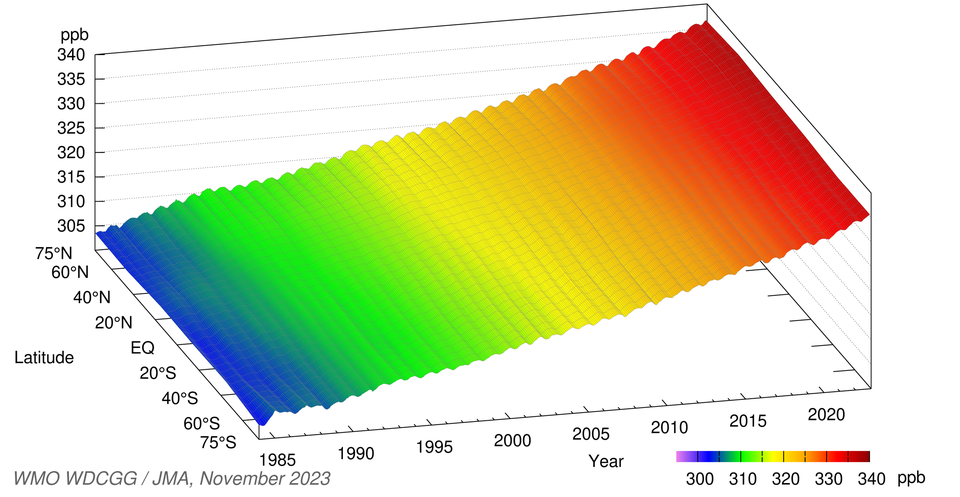Nitrous oxide (N2O) is a significant greenhouse gas because of its large radiative effect per unit mass (about 273 times greater than that of CO2) and its long lifetime (about 109 years) in the atmosphere (IPCC, 2021). Around 57% of N2O released into the atmosphere is of natural origin (oceans, soil, etc.), and around 43% is from human activity-related sources (biomass burning, nitrate fertilizers, various industrial processes, etc.) (WMO, 2024). It is photo-dissociated in the stratosphere by ultraviolet radiation.
Concentrations of atmospheric N2O exhibit a slight increase over time on a global scale. The results of WDCGG analysis show that the global mean annual atmospheric N2O mole fraction was 336.9 ppb in 2023, an increase of 1.1 ppb from the previous year. This is 25% higher than the pre-industrial level (about 270 ppb).
The figure below shows a time-series representation of N2O mole fractions at Ryori. It can be seen that short-term variations are very weak and there is no seasonal variation.

Time-series representation of N2O mole fractions recorded at JMA's Ryori observatory
Provisional values are included. Improvement of observation equipment in 2004 resulted in improved stability of measurements.
The figure below shows a time-series representation of globally averaged N2O mole fractions as analyzed by the WDCGG using statistical methods.

Time-series representation of globally averaged N2O mole fractions
Blue: monthly mean mole fractions. Red: monthly mean with seasonal variations removed.
Atmospheric N2O mole fractions show an increase year by year with seasonal variations at all latitudes.

Time-series representation of zonally averaged N2O mole fractions
IPCC, 2021: Climate Change 2021: The Physical Science Basis. Contribution of Working Group I to the Sixth Assessment Report of the Intergovernmental Panel on Climate Change [Masson-Delmotte, V., P. Zhai, A. Pirani, S.L. Connors, C. Péan, S. Berger, N. Caud, Y. Chen, L. Goldfarb, M.I. Gomis, M. Huang, K. Leitzell, E. Lonnoy, J.B.R. Matthews, T.K. Maycock, T. Waterfield, O. Yelekçi, R. Yu, and B. Zhou (eds.)]. Cambridge University Press, Cambridge, United Kingdom and New York, NY, USA, 2391 pp., https://doi.org/10.1017/9781009157896.
WMO, 2024: WMO Greenhouse Gas Bulletin, No. 20, https://library.wmo.int/records/?refine[Serial][]=WMO+Greenhouse+Gas+Bulletin.